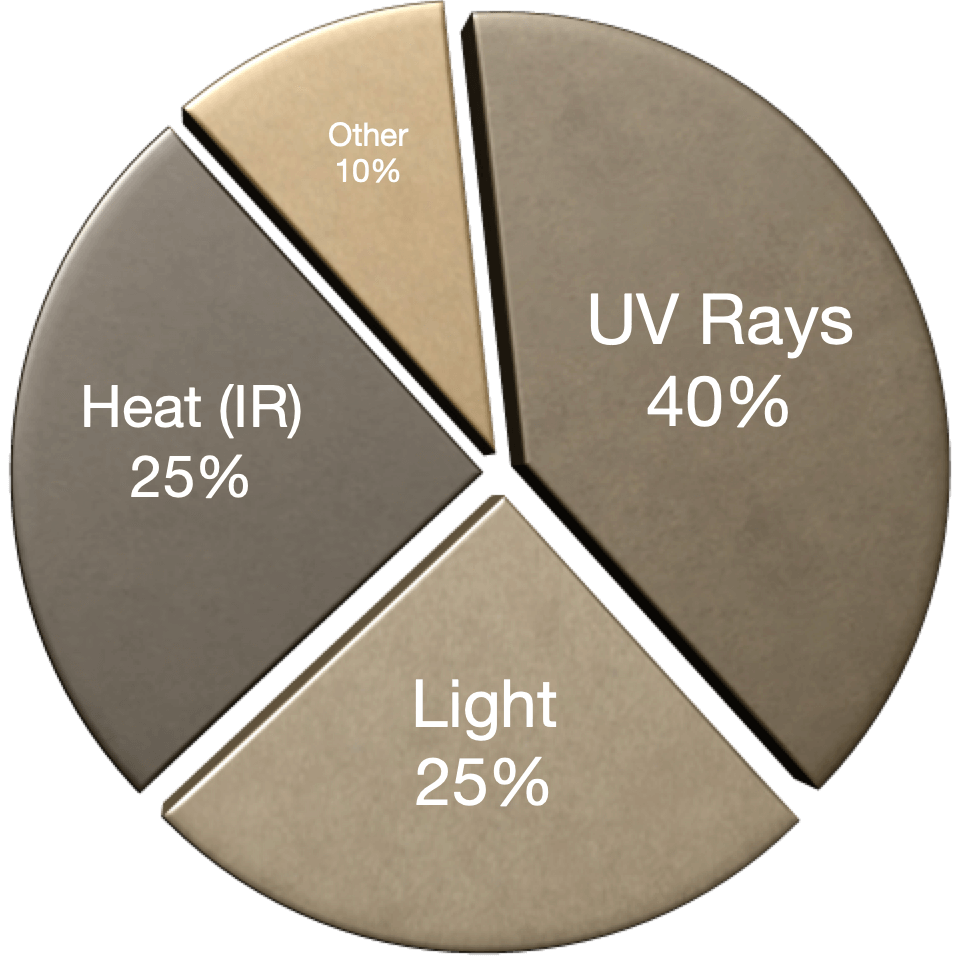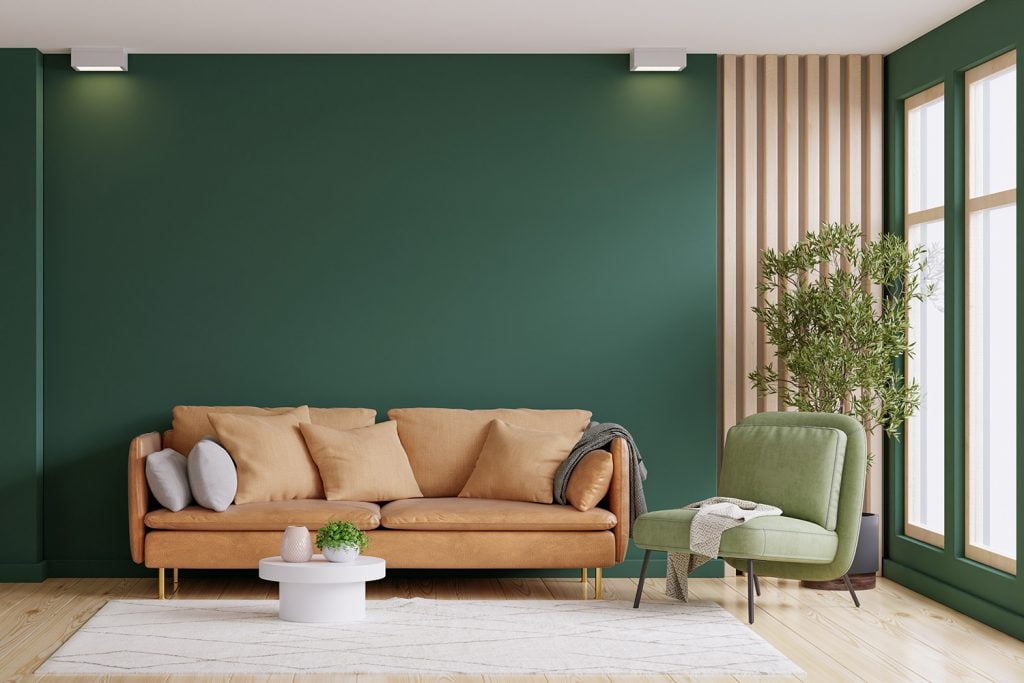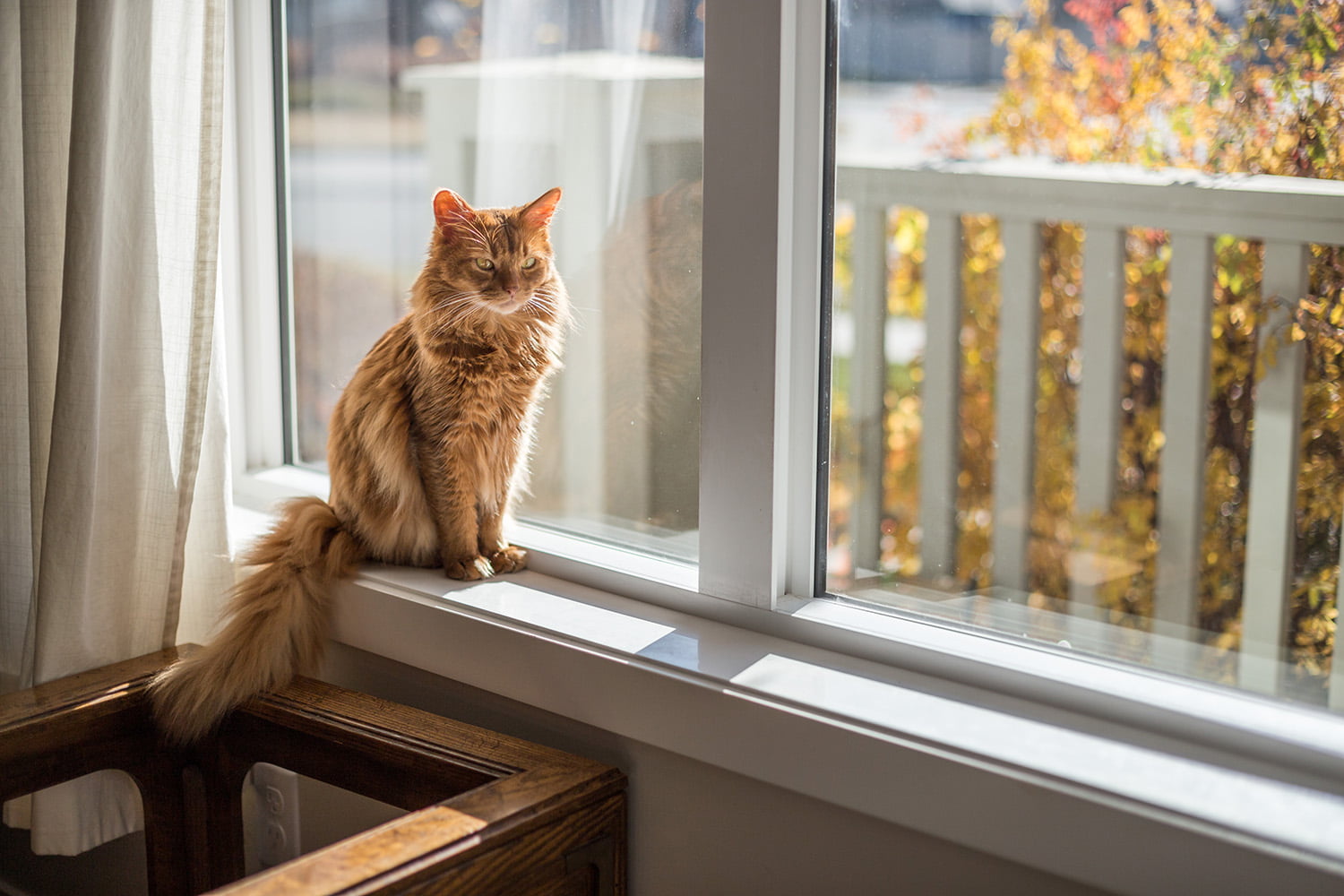What really causes fading?
The three main factors in fading are ultraviolet rays, visible light, heat, and a small percentage is indoor lighting and humidity. According to our experiences with industry meters, visible light has been greatly underrated for many years. Unfortunately there aren’t any official charts available that depict the actual fade calculations as stated by the standard of NFRC 300 but that hasn’t stopped us from forwarding you the information you deserve.
What we do believe is that visible light from the sun has more to do with fading than previously thought. We would rather side with caution and recommend you target visible light more if fade reduction is your #1 goal. During your free consultation be sure to ask for a demonstration.
Check out our blog on the causes of fading where we dig in deeper.
Industry Standards
40% UV Rays
25% Light
25% Heat
10% Other
CSI Standards
40% UV Rays
30% Light
25% Heat
5% Other

Industry Standard

If you are contemplating installing new window coverings or you wish to achieve a clean uncluttered look by skipping window coverings altogether, in both cases a high quality U/V Solar Film is beneficial. Our sun causes premature fading to not only the floors & paintings but think about the damage it’s doing to the window coverings being it’s the closest item to the source of the issue. The great thing about window film or window tinting is that it’s always present on your glass 24/7.
There is no product that can eliminate fading 100%, but a good quality window film is usually your best option to combat premature fading. So much attention is geared to protecting your valuables, but consider taking a few hints from the Skin Cancer Foundation.
We will gladly demonstrate this technology during your free consultation.
Clearview Sun Control, Inc. invests in the latest tools & technologies so you don’t have to take our word for it or accept what’s written on specification sample cards especially if it’s not rated by the NFRC. With the latest tools available we can clearly demonstrate to you the specifications & technical levels that are important to your needs which puts you in charge of the decision making process. You can start by filling out our Cost Estimator Form if you have detailed measurements of your glass panels. Or click the button below to fill out our basic form. A CSI representative will get back to you asap!

Clearview Sun Control, Inc.
811 N Catalina Ave. #2300
Redondo Beach, CA 90277